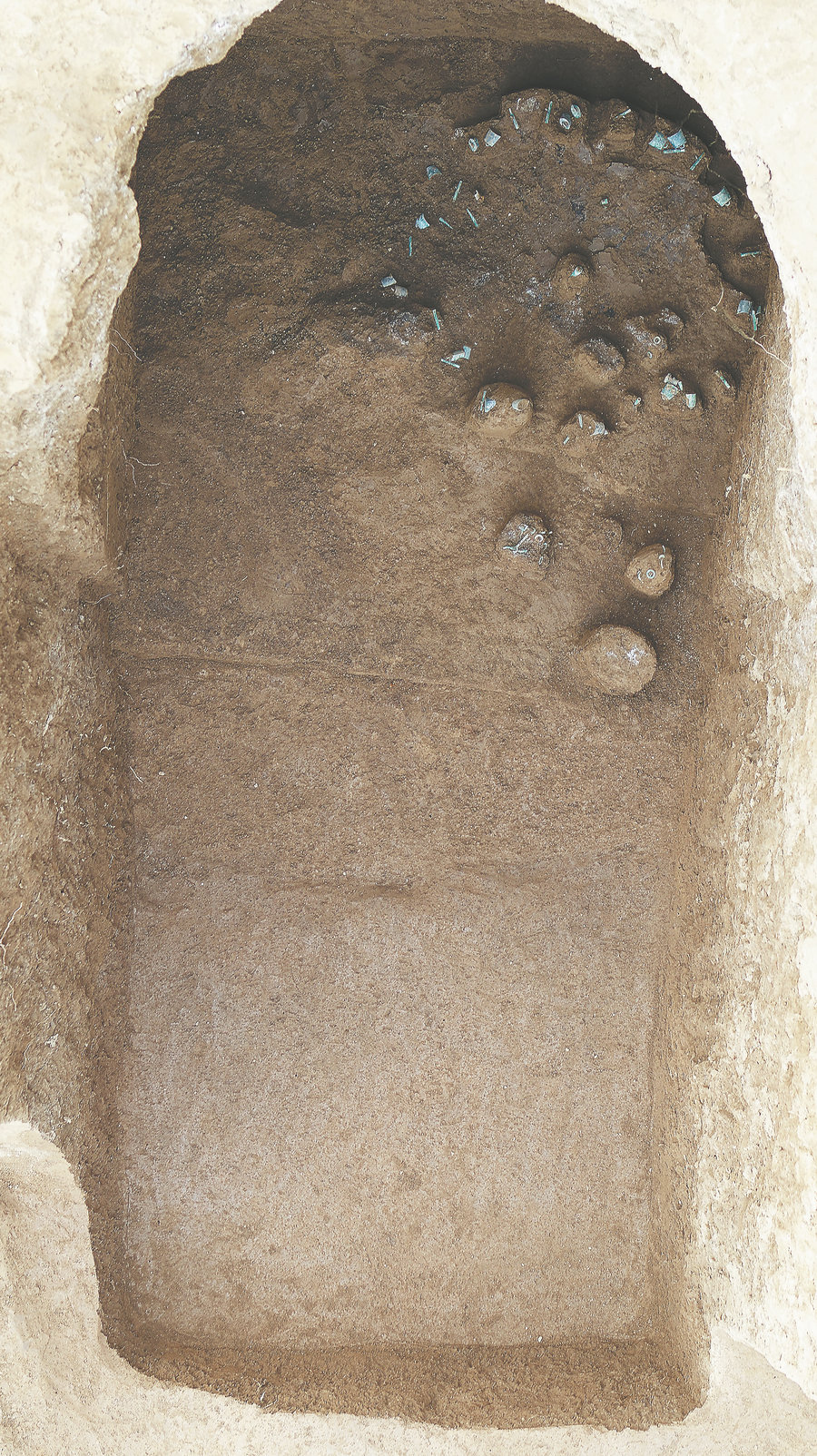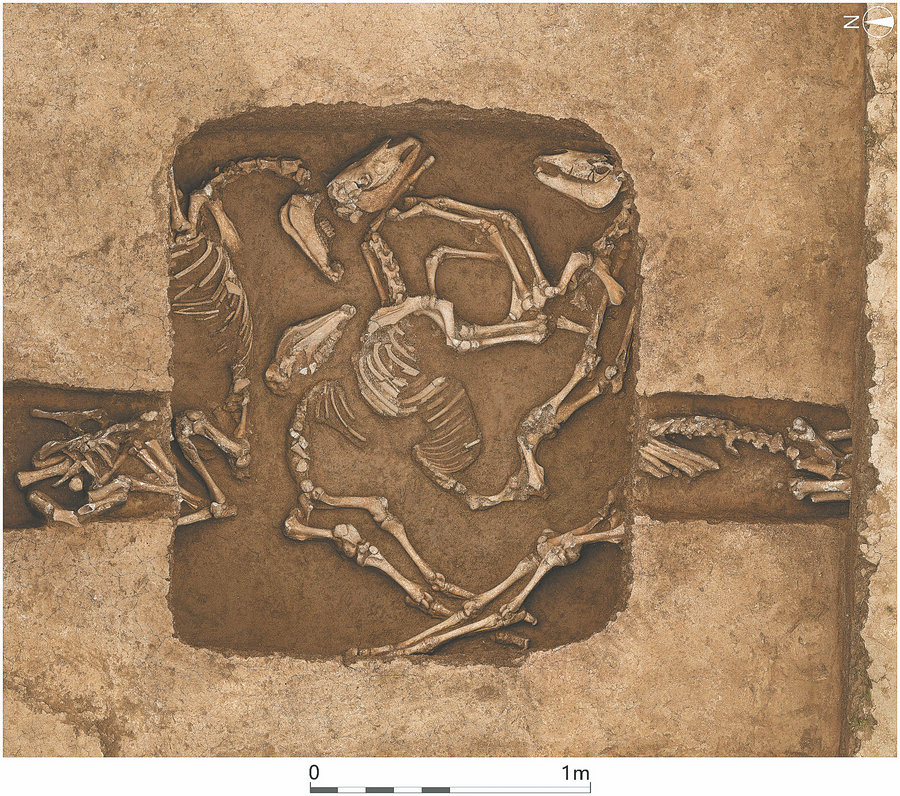

At the center of the site, there is an area where building materials are stacked, covering about 2,000 sq m. Various sacrificial pits are distributed around it.
The first one, a long strip, located on the eastern side of the site, dates back to the middle stage of the Spring and Autumn Period. Such pits range in length from about 10 to 100 meters, and often have the remains of cattle that were used as sacrificial offerings, the heads of which point northward.
The rectangular pits, located at the west of the site and dating from the late Spring and Autumn Period to the Western Han Dynasty, contain mainly three types of remains, animals, chariots and model chariots.
The largest of them is 8.7 meters long and 7.9 meters wide, and has a depth of more than 12 meters. It fell victim to robbers, but archaeologists suggest that it would fit four chariots, based on its size.

Some chariot-related artifacts unearthed are similar to those discovered from the Tomb No 1 of the Duke of Qin in Baoji, where Duke Jing of the Qin state (ruler of the state over 576-537 BC) was buried. This means that some pits were contemporaneous with the tomb, says You.
"From the Warring States Period (475-221 BC) to the Qin (221-206 BC) and Han (206 BC-AD 220) dynasties, the chariot pits gradually shrank. The life-size chariots were later replaced by models. Moreover, jade artifacts like figures, arch-shaped items known as huang and various cylindrical cong, as well as arrowheads, began to be put in the chariot and it became a custom," says You.